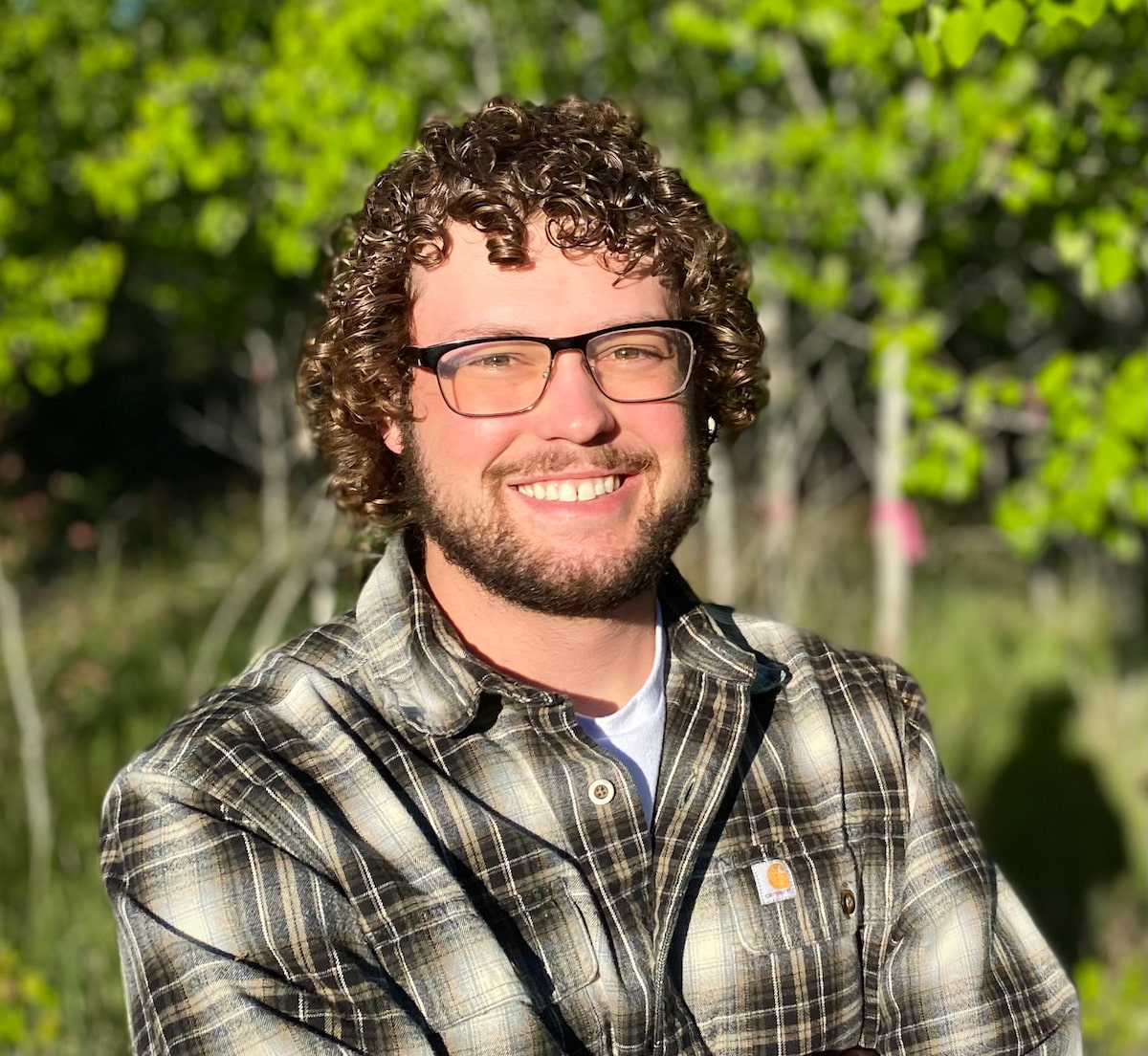Biology student spends the summer working in the aspen forests
This summer, Wayne State biology student Jed Jacobson is working far from the hustle and bustle of Midtown Detroit.

A master's candidate in the biological sciences department, Jacobson is embedded in the aspen forests of northern Michigan. He's working under Dr. Daniel Kashian to study the relative changes over 65 years of succession in growth, vigor and decline of trembling aspen clones of the Pellston Plain.
Jacobson will spend his summer living in a tin cabin at the University of Michigan Biological Station located in Pellston, Mich. and will measure how 20 separate clones of trembling aspen have changed along with the plant species found within the clonal areas.
Jacobson explained that aspen is a pioneering species and tends to be one of the first plants to reappear after a disturbance such as a fire. The Pellston Plain was burned repeatedly in the 1920s after being extensively logged in the late 1800s. Over time pioneering species such as trembling aspen give way to longer-lived species such as oak and maple.
The most impressive aspen clone, in Jacobson's opinion, is known as Pando and can be found in southern Utah. He explained this Aspen clone as a single trembling aspen that covers nearly 106 acres and has 40,000 stems.
He hopes that the outcome of his research will contribute to the knowledge base of widespread trembling aspen decline, which he said is a problem that both land managers and researchers have yet to answer.
"Outside of this immediate connection to my research interests, trembling aspen is an extremely interesting species as it reproduces asexually through suckering," said Jacobson. "This means that when you're standing in a group of aspens, even though there are anywhere between 10-100 stems around you, it is likely that all those stems are a part of the same organism."
Jacobson's inspiration to join the field of ecology came shortly before his undergraduate sophomore year when he was given a student position working with the United States Forest Service on a hand crew that focused on fires and burning. For the next four summers, he was given the opportunity to travel to every state west of Colorado to fight fires.
"During that experience, I was introduced to the idea that fire was a natural and essential part of most ecosystems. I was hooked ever since and pivoted from a pre-med track to studying disturbance and fire ecology."
Jacobson grew up in a rural area of northern Arizona and started his education at the University of South Dakota. Jacobson said he chose Wayne State to pursue his master's degree for several reasons. Kashian, his advisor, is an expert in his field and was recommended by one of the highly respected professors at the University of South Dakota. Jacobson was attracted to the diversity that Wayne State's campus and student body had to offer. He was also intrigued by immersing himself in the rich culture that Detroit offers.
"Wayne State seemed like such an interesting adventure to me and an opportunity to plunge myself into a diverse student base where I knew that I would grow both personally and professionally. Finally, I'm a total music nerd in my free time, and where else could I better immerse myself in culture than in Motown," said Jacobson.
Other than his work studying the trembling aspen in Northern Michigan, Jacobson spends his time working with a small group of students from biological sciences, communications, and urban planning on a research project for urban reforestation.
The urban reforestation project is funded under the NSF grant provided to Kashian in order to start the Transformative Research in Urban Sustainability Training (T-RUST) program at Wayne State. T-RUST is an innovative graduate training program designed to integrate social and physical science, technology, engineering, and mathematics in order to tackle challenges in urban sustainability.
Jacobson said that his group's goal is to explore how resident attitudes impact the city of Detroit along with partners like Greening of Detroit's reforestation programs. The inspiration for this project was Jacobson's time living in Detroit. During that time, he noticed there was a difference in tree canopy cover in different neighborhoods and that the gradient appearance of canopy cover changed according to the socioeconomic distribution of each neighborhood.
"After discussing it with my research partners I was made aware of the mass distrust of the municipal government and thought that research that crossed these interdisciplinary boundaries could cause meaningful change," said Jacobson. "We hope that the impact of this research will immediately make reforestation efforts more effective while also making these programs more equitable to the citizens of Detroit."
In the long term, Jacobson hopes to move back west and join the Forest Service as either a National Environmental Policy Act planner or a fuels specialist, focusing on planning prescribed burns. Jacobson graduated next spring and hopes to take time after graduation to join a Hotshot Crew where he would continue to fight wildfires across the west.
By Hannah Naimo, public relations associate